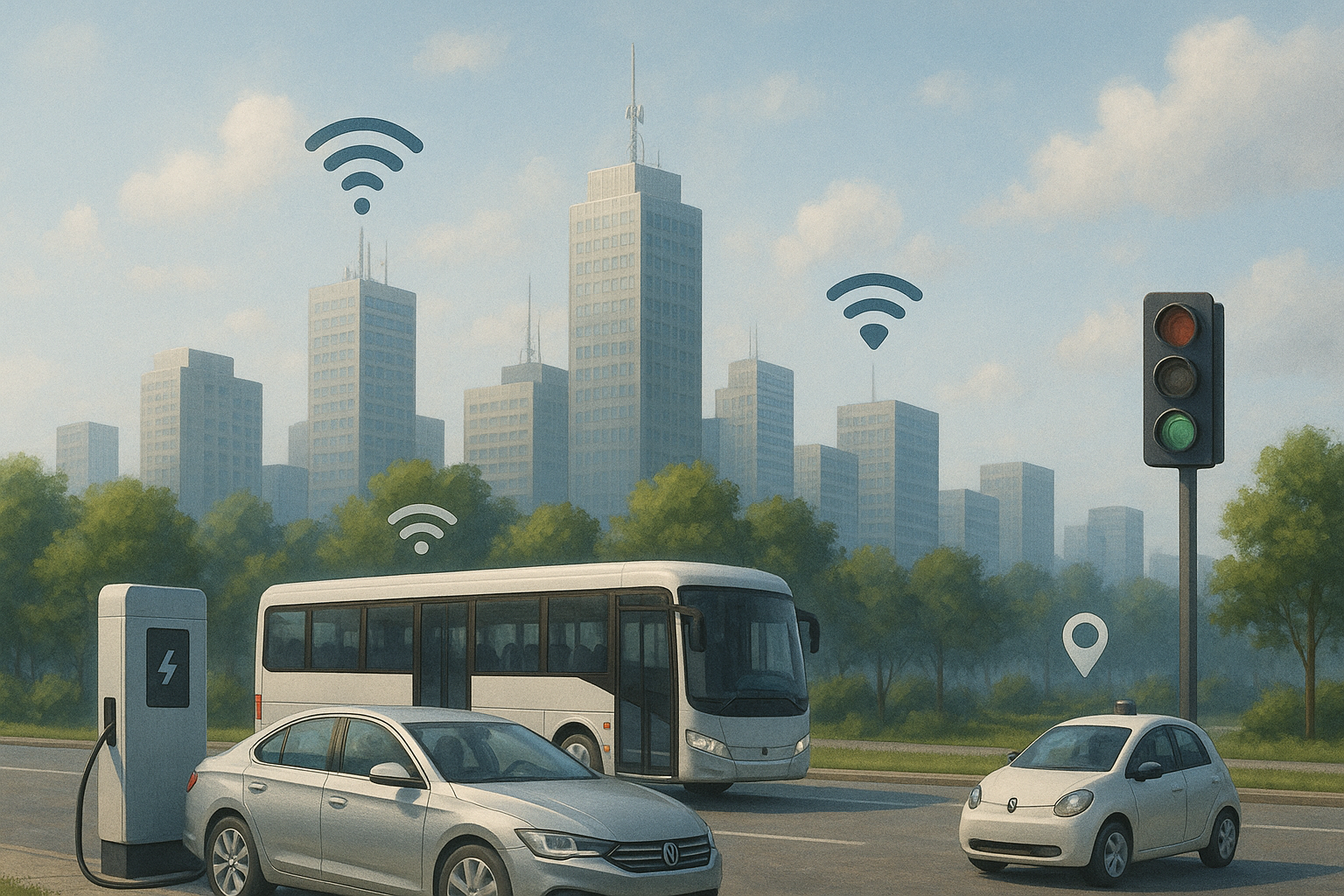Building Smarter Cities with Connected Mobility

Cities are vibrant—constantly growing, changing, and dynamic. Millions of individuals walk along their roads, metros, and transit systems every day. But as cities expand, so do problems: traffic, pollution, slowdowns, and inefficiencies.
The answer isn't more infrastructure — it's more smart infrastructure. And that's where connected mobility fits in.
Interconnected mobility refers to the concept that each element of a city's transportation system — cars, roads, sensors, and commuters — will talk to each other in sync as a result of digital interconnectedness. It has been dubbed as the nervous system of the current smart city, and it is a product of technologies as we have already described, including Geographic Information Systems (GIS), Intelligent Transport Management Systems (ITMS), and the Internet of Things (IoT).
From Data to Decisions: The Heart of a Smart City
A smart city has infrastructure communicating with one another — in real time, passing information and making wiser decisions.
- ITMS links buses, depots, and control centres to make them perform better.
- GIS plots this information on smart maps, so planners know where to focus on making improvements.
- IoT devices, ranging from traffic sensors to IP cameras, give the systems their real-time data.
They together form a city's digital nervous system — sensing, processing, and acting in real time.
Envision a city whose traffic lights shift intuitively depending on traffic, transit corridors shift to demand in real time, and travellers never have to second-guess the best route home. This is the shared vision of connected mobility.
Smarter Transport, Smarter Lives
Beneath all the tech and innovation, though, shared mobility is truly making daily life a little bit better. The commuter does not have to wonder when his bus will arrive since there are real-time tracking facilities accessible to him.
There is no point in having a traffic officer sit and monitor intersections, as the system foretells traffic jams days in advance. A planner can access environmental data and traffic movement superimposed onto a single GIS dashboard that they can utilise to make long-range sustainability decisions.
All these tiny moments of human communication in the digital world contribute to something much bigger — a responsive and vibrant city.
The Role of ITMS: Intelligence Behind the Movement
An Intelligent Transport Management System (ITMS) is the smart city's transport network's cognitive nerve. It integrates different technologies — from video surveillance and passenger information systems to vehicle tracking and route guidance.
ITMS can, through AI and automation, both:
- Automatically switch cars if there is a delay.
- Fleet scheduling to operate for fuel efficiency.
- Ensure public transportation safety using AI-powered video monitoring.
- Provide commuters with real-time travel advice.
By correlating data throughout the entire transportation system, ITMS ensures that every train, every bus and every traffic light work together in unison — not in isolation.
How GIS Provides Context and Clarity
Whereas ITMS manages the operations, GIS provides the geographic intelligence that brings it all together.
GIS overlays not only point onto a map but also bring spatial context to a decision. Urban planners can visualise hot corridors, accident clusters, and service vacancies. Overlay it with real-time data from IoT sensors, and GIS makes a static map a breathing, living instrument of keener planning.
Take, for instance, the case of combining GIS integrations with ITMS to identify the places to include in new bus routes, optimise roads more effectively, or position electric charging facilities for vehicles strategically.
IoT: The Network that Unifies Everything
The Internet of Things (IoT) is the thread that weaves a smart city together. Car, traffic light, and street-level sensors provide data continuously — from air quality to car speeds. This data is relayed in real time to master control centres such as ITMS, which process and respond to it. If a traffic sensor registers congestion, the system can change the time for signals automatically or notify drivers via integrated mobile apps.
IoT does not merely gather data — it makes cities informed, responsive, and interactive.
Sustainability Through Smart Mobility
It's not just tech; it's green. Smarter routing means fewer cars out there and less fuel consumption. Less idling and fewer pollutants – that's intelligent traffic control. Digital media also encourages commuters to avail themselves of shared and public transport, which reduces the number of vehicles operating on roads. All these changes together provide cleaner skies, quieter roads, and healthier cities.
Problems on the Way to Smart Cities
Of course, making really networked cities isn't a night's work. Issues like how to integrate legacy systems, how to secure data privacy, and security have to be treated carefully. But the biggest challenge, perhaps, is cooperation — between governments, between technology companies, and between citizens. A smart city isn't created by tech; it's created by cooperation and vision.
Conclusion
The cities of the future won’t just be bigger — they’ll be smarter. Connected mobility is the bridge between technology and humanity, helping cities become cleaner, faster, and more responsive to the people who live in them.
With innovations in ITMS, GIS, and IoT, we’re moving toward a world where transport doesn’t just react — it thinks, adapts, and cares.
At Arenasoftwares, we’re proud to help build that future — one intelligent, connected city at a time.
